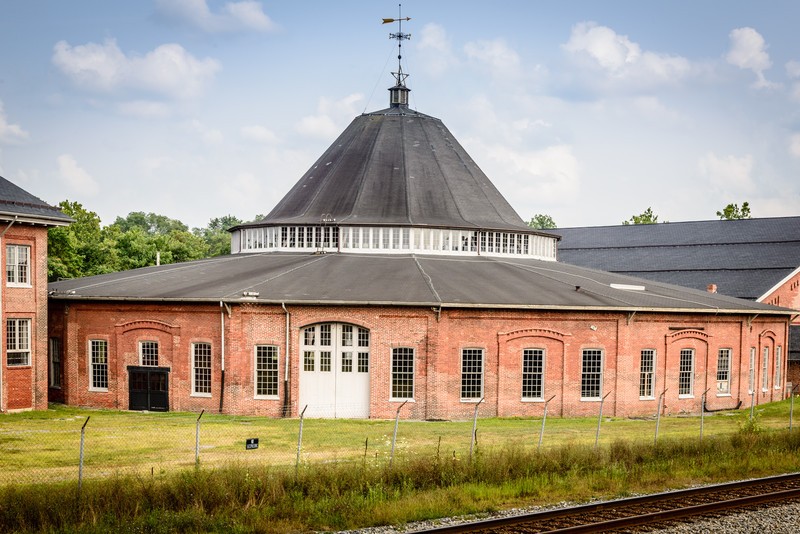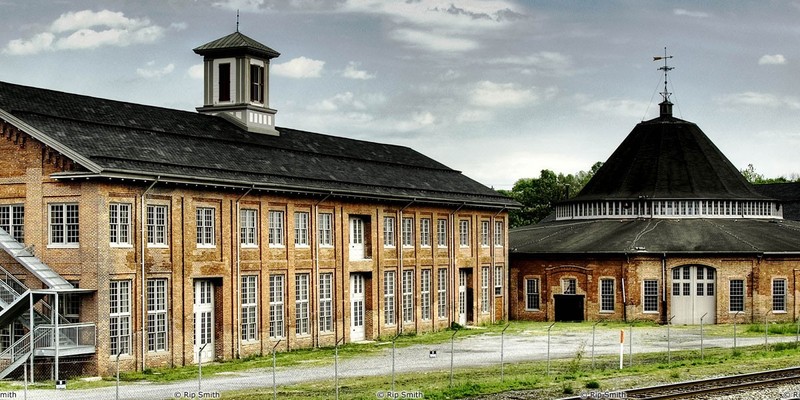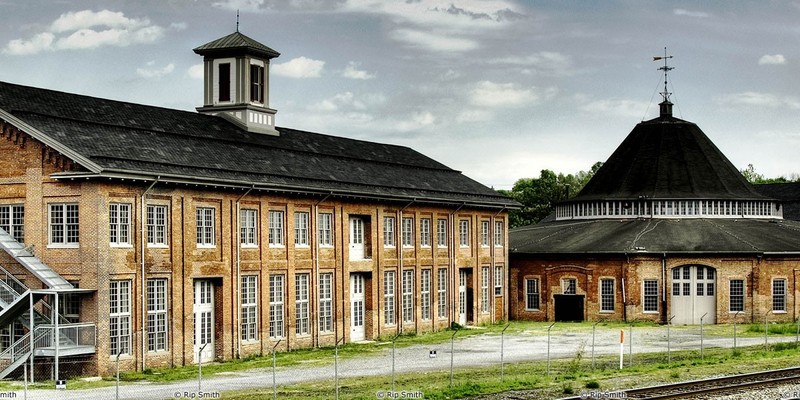Martinsburg Roundhouse
Introduction
Text-to-speech Audio
Images
Martinsburg Roundhouse

Martinsburg Roundhouse


Backstory and Context
Text-to-speech Audio
The first roundhouse in Martinsburg was built in the 1840s as a part of the B&O Railroad Company.1
The roundhouse was completed in 1849 and was crucial to the economic development of the town. Yet it was lost during the Civil War. Confederate General Thomas "Stonewall" Jackson was given strict orders to stop all train activity at the Martinsburg Roundhouse as a part of a campaign against the Baltimore and Ohio railroad company and the Union army. Following orders, in 1862 Jackson burned down roundhouse, blew up numerous bridges, and pirated some of the B&O trains. In total, 42 locomotives and 386 cars were stolen and destroyed, along with the destruction of 36 and ½ miles of track, 17 bridges, 102 miles of telegraph wire, and the “Colonnade” Bridge.
Following the end of the Civil War, the Baltimore and Ohio Railroad Company rebuilt a roundhouse in Martinsburg. The current roundhouse was constructed in 1866. Its cast-iron frame was cast in Baltimore and then shipped to Martinsburg, where it was erected and bricked. The complex was composed of the roundhouse and two additional shops: the Bridge Shop and the Frog and Switch Shop. Both of these shops were also constructed in 1866. A second roundhouse was built on the property in 1872, expanding the work being done at the roundhouse. From 1866 until 1988, the Martinsburg Roundhouse was an immense economic contributor to the city of Martinsburg, the surrounding counties, and the state of West Virginia.
Another key event in the history of the Martinsburg Roundhouse is that it served as the setting for the beginning of the Great Railroad Strike of 1877. On July 16, 1877, angry railroad workers went on strike because of wage cuts at the B&O. This work stoppage then spread across the United States with strikes popping up in Baltimore, Pittsburgh, Chicago, and Louisville. The strike even spread into different industries as steelworkers in Pittsburgh joined the railroad workers' protests. The striking lasted for a little over two months and was the nation's first nationwide strike. The strike ended when President Hayes sent in federal troops to various cities to suppress the angry workers. Ultimately, the strike resulted in the cancellation of the wage cut and contributed to the rise in unions in the United States.
During the twentieth century, the Martinsburg Roundhouse added three more shops to the site: the Blacksmith shop, rehabilitation shop, and the saw house. These shops were an asset to the roundhouse when the site transitioned to being a "maintenance of way" shop. Maintenance of way refers to repairing railroad property such as tracks, bridges, and equipment cars. The Martinsburg Roundhouse shops operated as a maintenance of way shop from the 1930s until the 1980s. CSX closed the Martinsburg shops starting in 1985 and were fully closed in 1988.
In the early 1990s, one of the two historic roundhouses (the East Roundhouse constructed in 1872) was destroyed by an arsonist. However, the site still contains numerous antebellum shop buildings and one roundhouse. It is now a National Historic Landmark; the surviving historic roundhouse has stood the test of time with very few architectural changes. It is the only one of its kind left in the United States. The Martinsburg Roundhouse has a deeply rooted history and can be toured today by appointment and walk-ins are welcome.
Sources
1. http://martinsburgroundhouse.com/home-2/
